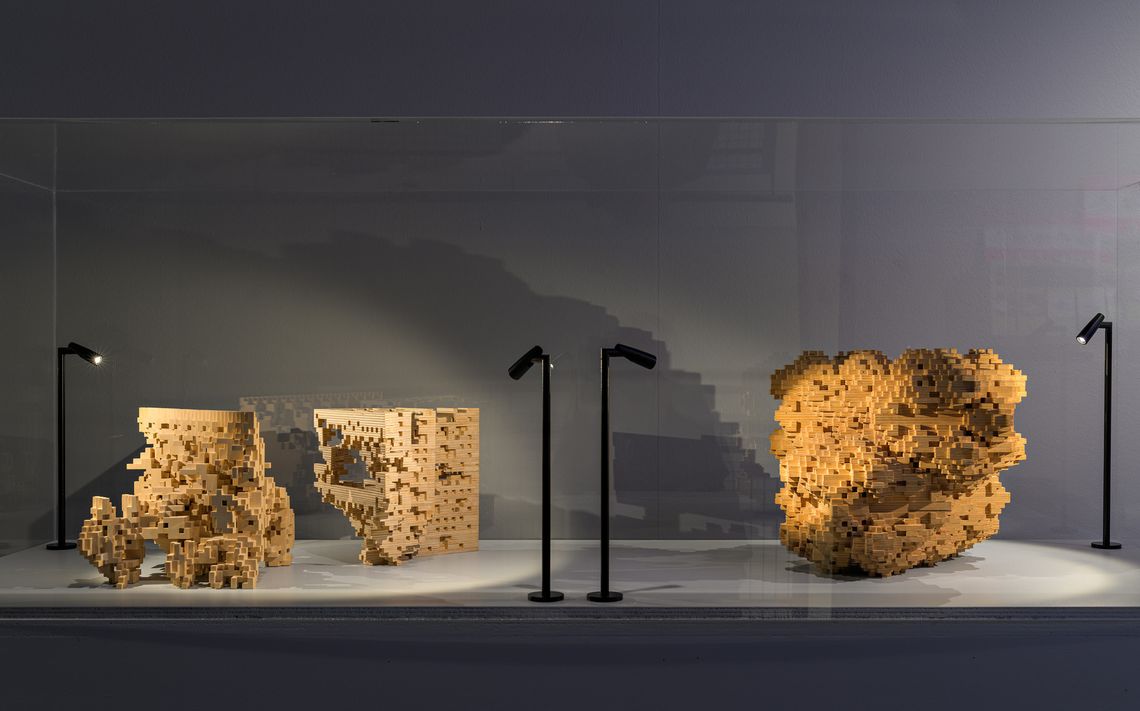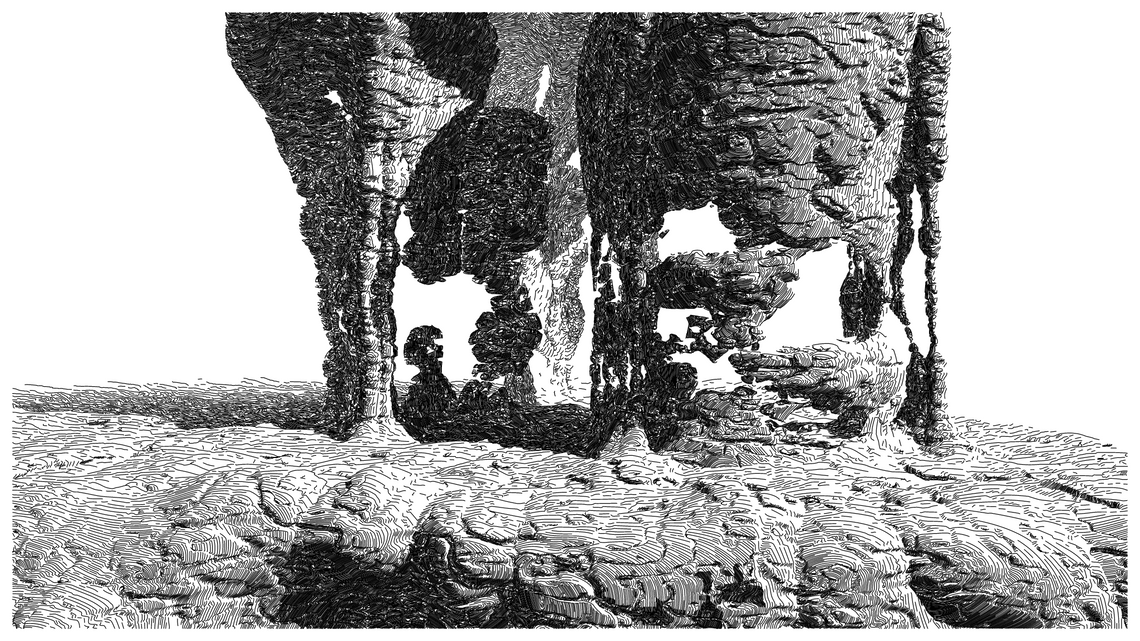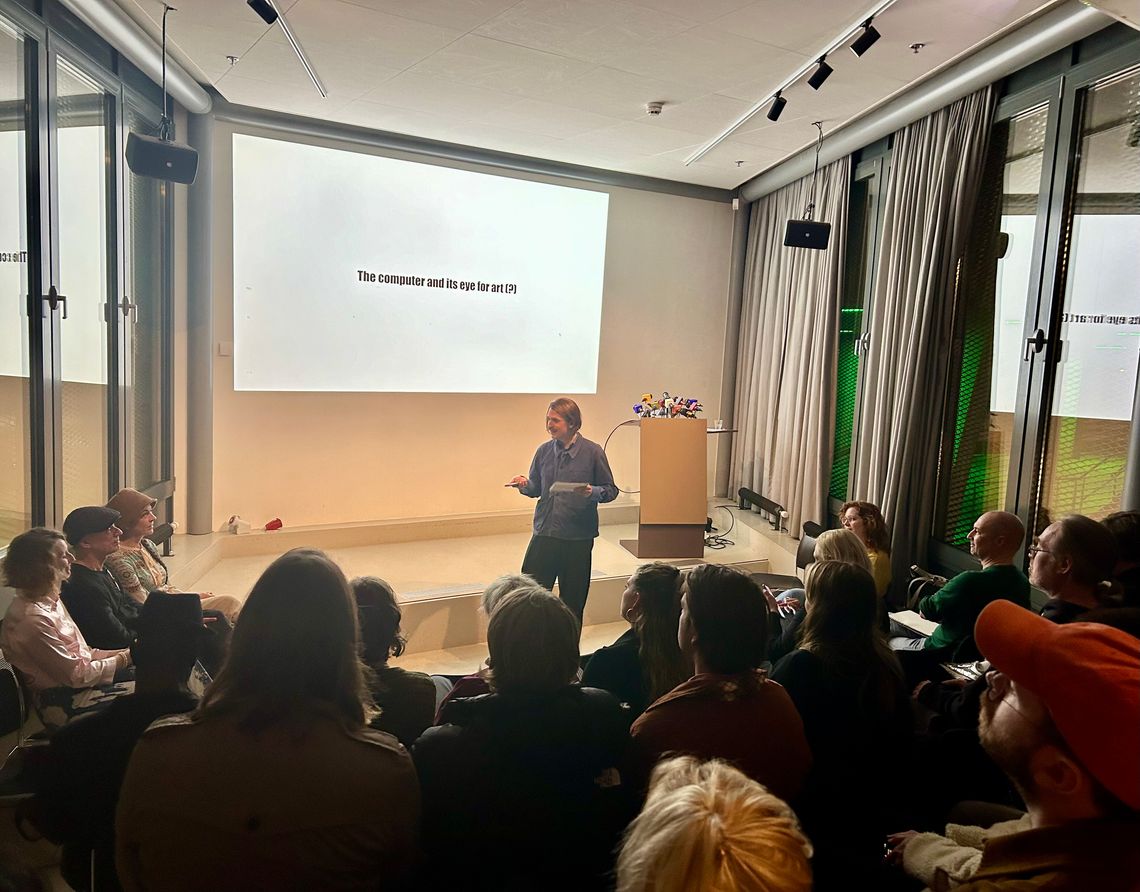
17-06-24
Do computers have an eye for art? ‘We need to talk about computing #2’ at Nieuwe Instituut
Within the framework of the REBOOT: Pioneering Digital Art exhibition, the second event entitled ‘We need to talk about computing’ held on March 14th, 2024, zooms in on the intricacies of computer-generated art. The evening is moderated by Florian van Zandwijk, who invited the artist duo Driessens & Verstappen (Erwin Driessens and Maria Verstappen) and the art historian Nina Knaack to kick off the discussion.
Author: Marijn Bril
Driessens & Verstappen introduce their exhibited work Breed (1995-2007), a computer program that generates shapes based on artificial evolution. Inspired by embryology, the code starts with one cell, splits it into eight new cells, repeating the process until it becomes a complex multi-cellular structure. In each step, the code evaluates the feasibility of the mutation (no floating shapes!) and proceeds accordingly. The final pieces on show are physical sculptures made of voxels (3D pixels), yet the real work is the software itself.

Florian asks, “How did your work evolve with increasing computer power?” The duo explains that they aimed for fully automated production, but this was only possible after the 2000s when they could use 3D printing. The objects from the 1990s are sawn from plywood and glued together manually. With more computer power, more details were possible (more cell division); yet even now, sculptures often require scaling down due to technical constraints.
Next, Nina introduces the work Geomorphism by Piter Pasma, a series of unfolding code-generated line drawings of rock structures visually inspired by surrealists such as Dalí. The artist put the code on-chain, allowing it to generate outputs once minted. According to Nina, generative art and the blockchain are a match made in heaven: you can see all of the parts of a series rather than just one outcome, the works can be collected and owned, and there’s a community created around the art.

The conversation transitions to the aesthetics of these works, questioning their origin: Were they a result of machine logic or artistic intent? The relationship between the tool and the artwork spans a spectrum ranging from instruction to collaboration. Pasma’s work is coded based on a particular aesthetic reference, which raises questions about what it means for AI to create a visual language based on cultural memory. Driessen & Verstappen’s aesthetic unfolds through the continuous duplication of simple cubes. Maria says, “With the computer, a new aesthetic field opened up to us, something we never could think of by ourselves and comes partly from the machine.” Here, REBOOT co-curator Klaas Kluitenbrouwer notes that the algorithmic aesthetic precedes contemporary technology, tracing it back to knitting patterns, mosaics, and even growing patterns of crystals.
Yet, when presenting these types of works, how do you make the viewer grasp its inner workings? In the case of Driessen & Verstappen, their static sculptures are only a selection of possible outcomes, yet the shapes allow the audience to understand how they evolved. According to Sanneke Huisman, co-curator of the show, this sense of process is essential. In the case of black box systems, there is no understanding of how a particular output came to be. Some artists expose the internal workings of technologies and, by doing so, ask critical questions about them. She underlines how these process-based works create dialogues with the viewers in different ways, ranging from presenting a selection of the results to presenting all the possible outcomes. In the work ‘Artificial’ (1991) by Remko Scha in the exhibition, a computer program generates an endless stream of images, presenting the audience something different each time. A paradox emerges: you could say the individual images merge into a mass stream, or every moment is precious because every image is unique, she says.

“Beyond binary thinking of a utopia vs dystopia, with or without AI, what do these systems give us, and what does it take away?” Florian asks. Here, Maria compares current AI developments to the early days of photography. She says that since we’re at the start of these developments, we may not yet see the difference between a good and bad AI image. Nina stresses that while AI imagery can be very generic, the creative possibilities are endless when you train the AI yourself. An audience member notes the importance of artistic intent when working with technological tools. Maria says, “Creativity always finds its way. I believe something will get lost, but not for long. Something else emerges.”
REBOOT: Pioneering Digital Art was on view at Nieuwe Instituut between October 7th 2023 – May 12th 2024.
Marijn Bril is an independent curator and researcher focusing on media art and digital culture.

